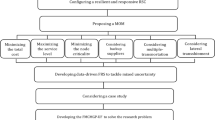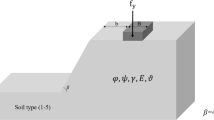Abstract
The natural variations of climatic system, as well as the potential influence of human activity on global warming, have changed the hydrologic cycle and threatened current water resources management. And the conflicts between different objectives in reservoir operation may become more and more challenging because of the impact of climate change. This study aims at deriving multi-objective operating rules to adapt to climate change and alleviate the conflicts. By combining the reservoir operation function and operating rule curves, an adaptive multi-objective operation model was proposed and developed. The optimal operating rules derived both by dynamic programming and NSGA-II method were compared and discussed. The projection pursuit method was used to select the best operating rules. The results demonstrate that the reservoir operating rules obtained by NSGA-II can increase the power generation and water supply yield and reliability, and the rules focusing on water supply can significantly increase the reservoir annual water supply yield (by 18.7 %). It is shown that the proposed model would be effective in reservoir operation under climate change.









Similar content being viewed by others
References
Afshar A, Shafii M, Bozorg Haddad O (2011) Optimizing multi-reservoir operating rules: an improved HBMO approach. J Hydroinf 13(1):121–139
Ahmadi M, Bozorg Haddad O, Loáiciga HA (2014a) Adaptive reservoir operating rules under climatic change. Water Resour Manag 29(4):1247–1266
Ahmadi M, Bozorg Haddad O, Mariño MA (2014b) Extraction of flexible multi-objective real-time reservoir operating rules. Water Resour Manag 28(1):131–147
Bellman R (1956) Dynamic programming and Lagrange multipliers. Proc Natl Acad Sci U S A 42(10):767–769
Bozorg Haddad O, Marino MA (2007) Dynamic penalty function as a strategy in solving water resources combinatorial optimization problems with honey-bee mating optimization (HBMO) algorithm. J Hydroinf 9(3):233–250
Chang LC, Chang FJ (2009) Multi-objective evolutionary algorithm for operating parallel reservoir system. J Hydrol 377(1):12–20
Chang FJ, Chen L, Chang LC (2005) Optimizing the reservoir operating rule curves by genetic algorithms. Hydrol Process 19(11):2277–2289
Chen L, McPhee J, Yeh WWG (2007) A diversified multiobjective GA for optimizing reservoir rule curves. Adv Water Resour 30(5):1082–1093
Cui HJ (1997) The laws of the iterated logarithm for two kinds of PP statistics. Stat Probabil Lett 32(3):235–243
Deb K, Agrawal S, Pratap A, Meyarivan T (2000) A fast elitist non-dominated sorting genetic algorithm for multi-objective optimization: NSGA-II. Lect Notes Comput Sci 1917:849–858
Eum HI, Simonovic SP (2010) Integrated reservoir management system for adaptation to climate change: the Nakdong River Basin in Korea. Water Resour Manag 24(13):3397–3417
Fallah-Mehdipour E, Bozorg Haddad O, Rezapour Tabari MM, Mariño MA (2012) Extraction of decision alternatives in construction management projects: Application and adaptation of NSGA-II and MOPSO. Expert Syst Appl 39(3):2794–2803
François B, Hingray B, Hendrickx F, Creutin JD (2014) Seasonal patterns of water storage as signatures of the climatological equilibrium between resource and demand. Hydrol Earth Syst Sc 18(9):3787–3800
Friedman JH (1987) Exploratory projection pursuit. J Am Stat Assoc 82(397):249–266
Goyal MK, Ojha CSP, Singh RD, Swamee PK, Nema RK (2013) Application of ANN, fuzzy logic and decision tree algorithms for the development of reservoir operating rules. Water Resour Manag 27(3):911–925
Guo SL, Guo J, Zhang J, Chen H (2009) VIC distributed hydrological model to predict climate change impact in the Hanjiang Basin. Sci China Technol Sc 52(11):3234–3239
Guo J, Chen H, Xu CY, Guo SL, Guo JL (2012) Prediction of variability of precipitation in the Yangtze River Basin under the climate change conditions based on automated statistical downscaling. Stoch Environ Res Risk Assess 26(2):157–176
Guo JL, Guo SL, Li Y, Chen H, Li TY (2013) Spatial and temporal variation of extreme precipitation indices in the Yangtze River basin, China. Stoch Environ Res Risk Assess 27(2):459–475
Hashimoto T, Stedinger JR, Loucks DP (1982) Reliability, resiliency and vulnerability criteria for water resource system performance evaluation. Water Resour Res 18(1):14–20
Huth R (2002) Statistical downscaling of daily temperature in Central Europe. J Clim 15(13):1731–1742
Jiang T, Chen YD, Xu C, Chen X, Chen X, Singh VP (2007) Comparison of hydrological impacts of climate change simulated by six hydrologicalmodels in the Dongjiang Basin, South China. J Hydrol 336(3):316–333
Kim T, Heo JH, Jeong CS (2006) Multi-reservoir system optimization in the Hanjiang basin using multi‐objective genetic algorithms. Hydrol Process 20(9):2057–2075
Kjeldsen TR, Rosbjerg D (2004) Choice of reliability, resilience and vulnerability estimators for risk assessments of water resources systems. Hydrol Sci J 49(5):755–767
Labadie J (2004) Optimal operation of multi-reservoir systems: state-of-the-art review. J Water Resour Plan Manag 130(2):93–111
Liang X, Lettenmaier DP, Wood EF, Burges SJ (1994) A simple hydrologically based model of land surface water and energy fluxes for general circulation models. J Geophys Res-Atmos 99(D7):14415–14428
Majone B, Bovolo CI, Bellin A, Blenkinsop S, Fowler HJ (2012) Modeling the impacts of future climate change on water resources for the Gállego river basin (Spain). Water Resour Res 48(1), W01512
McMahon TA, Adeloye AJ, Zhou SL (2006) Understanding performance measures of reservoirs. J Hydrol 324(1):359–382
Mitchell TD (2003) Pattern scaling: an examination of the accuracy of the technique for describing future climates. Clim Chang 60(3):217–242
Moss RH, Edmonds JA, Hibbard KA, Manning MR, Rose SK, Van Vuuren DP, Wilbanks TJ (2010) The next generation of scenarios for climate change research and assessment. Nature 463(7282):747–756
Moy WS, Cohon JL, ReVelle CS (1986) A programming model for analysis of the reliability, resilience, and vulnerability of a water supply reservoir. Water Resour Res 22(4):489–498
Oliveira R, Loucks DP (1997) Operating rules for multi-reservoir systems. Water Resour Res 33(4):839–852
Ostadrahimi L, Mariño MA, Afshar A (2012) Multi-reservoir operating rules: multi-swarm PSO-based optimization approach. Water Resour Manag 26(2):407–427
Qin D, Plattner GK, Tignor M, Allen SK, Boschung J, Nauels A, Midgley PM (2014) Climate change 2013: The physical science basis. Cambridge University Press, Cambridge
Schaefli B (2015) Projecting hydropower production under future climates: a guide for decision-makers and modelers to interpret and design climate change impact assessments. Wiley Interdiscip Rev Water. doi:10.1002/wat2.1083
Shokri A, Bozorg Haddad O, Mariño MA (2013) Algorithm for increasing the speed of evolutionary optimization and its accuracy in multi-objective problems. Water Resour Manag 27(7):2231–2249
Wang S, Zhang X, Yang Z, Ding J (2006) Projection pursuit cluster model based on genetic algorithm and its application in Karstic water pollution evaluation. Int J Environ Pollut 28(3):253–260
Wardlaw R, Sharif M (1999) Evaluation of genetic algorithms for optimal reservoir system operation. J Water Res Plan Man 125(1):25–33
Wetterhall F, Bárdossy A, Chen D, Halldin S, Xu CY (2006) Daily precipitation‐downscaling techniques in three Chinese regions. Water Resour Res 42(11), W11423
Wilby RL, Harris I (2006) A framework for assessing uncertainties in climate change impacts: Low‐flow scenarios for the River Thames, UK. Water Resour Res 42(2), W02419
Wilby RL, Wigley TML, Conway D, Jones PD, Hewitson BC, Main J, Wilks DS (1998) Statistical downscaling of general circulation model output: A comparison of methods. Water Resour Res 34(11):2995–3008
Wilby RL, Dawson CW, Barrow EM (2002) SDSM—a decision support tool for the assessment of regional climate change impacts. Environ Model Softw 17(2):145–157
Xin X, Wu T, Li J, Wang Z, Li W, Wu F (2013) How well does BCC_CSM1.1 reproduce the 20th century climate change over China? Atmos Ocean Sci Lett 6(1):21–26
Yeh WWG (1985) Reservoir management and operations models: A state of the art review. Water Resour Res 21(12):1797–1818
Yu PS, Yang TC, Wu CK (2002) Impact of climate change on water resources in southern Taiwan. J Hydrol 260(1–4):161–175
Zhou YL, Guo SL (2013) Incorporating ecological requirement into multipurpose reservoir operating rule curves for adaptation to climate change. J Hydrol 498:153–164
Acknowledgments
This study was financially supported by the National Natural Science Foundation of China (51539009, 51422907, 51190094). The authors would like to thank the editor and the anonymous reviewers for their valuable comments, which helped improve the quality of the paper.
Author information
Authors and Affiliations
Corresponding author
Ethics declarations
Conflict of Interest
The authors declared that they have no conflicts of interest to this work.
Rights and permissions
About this article
Cite this article
Yang, G., Guo, S., Li, L. et al. Multi-Objective Operating Rules for Danjiangkou Reservoir Under Climate Change. Water Resour Manage 30, 1183–1202 (2016). https://doi.org/10.1007/s11269-015-1220-7
Received:
Accepted:
Published:
Issue Date:
DOI: https://doi.org/10.1007/s11269-015-1220-7




